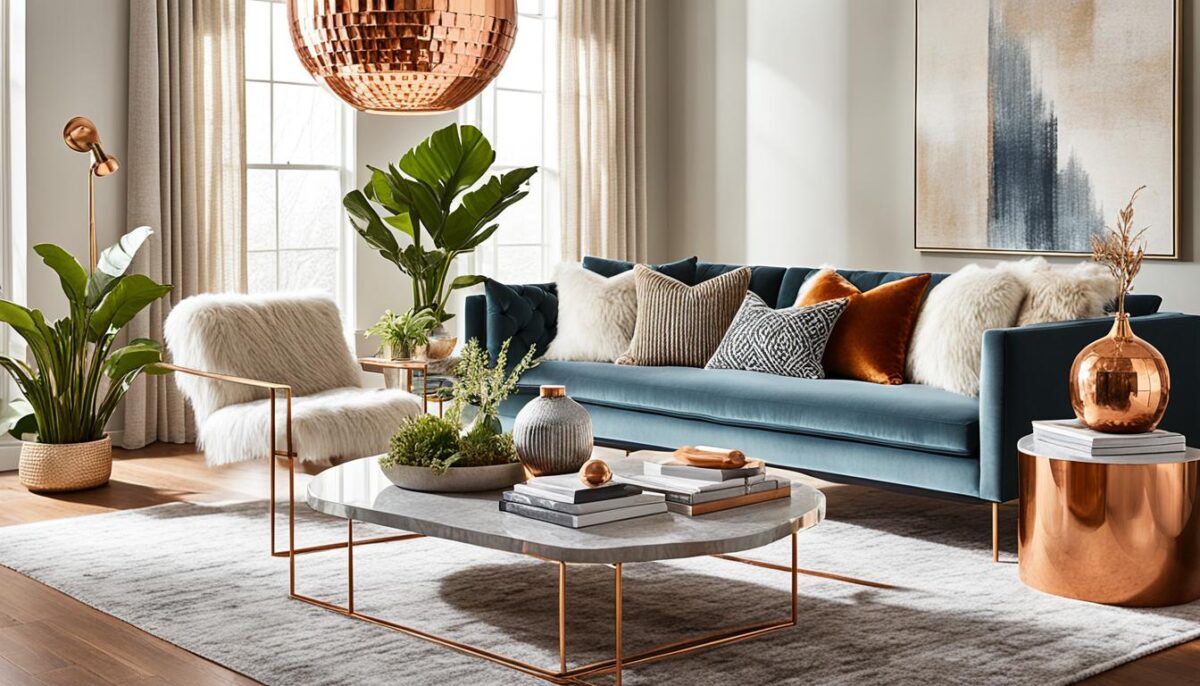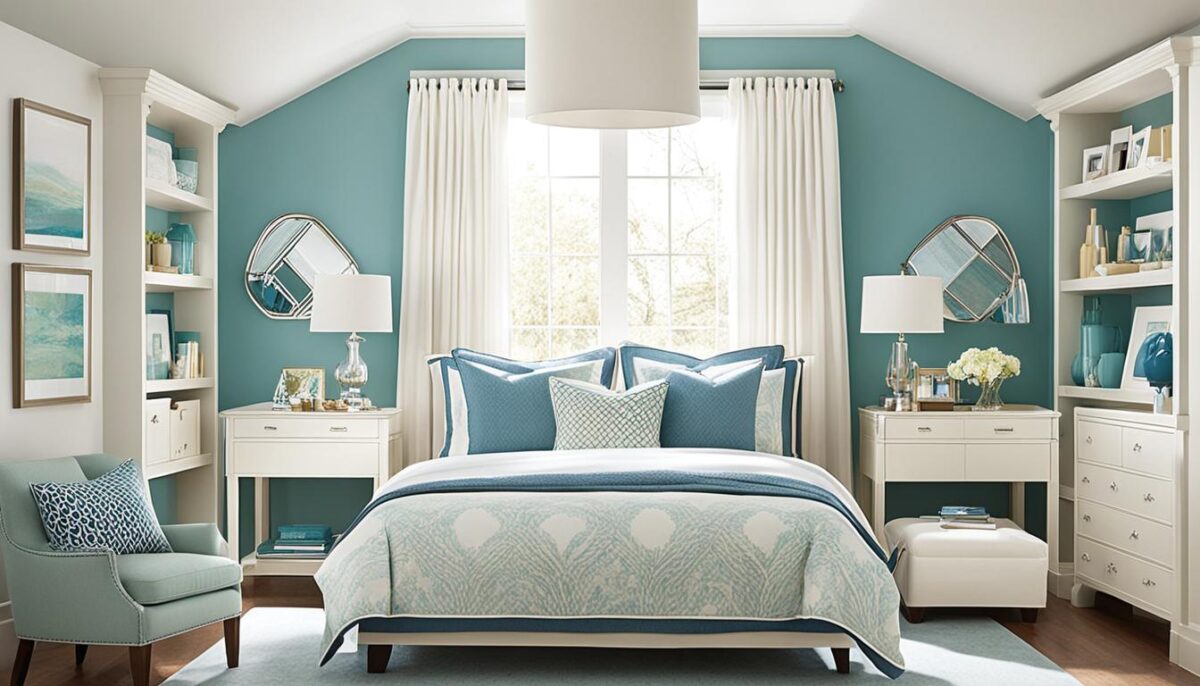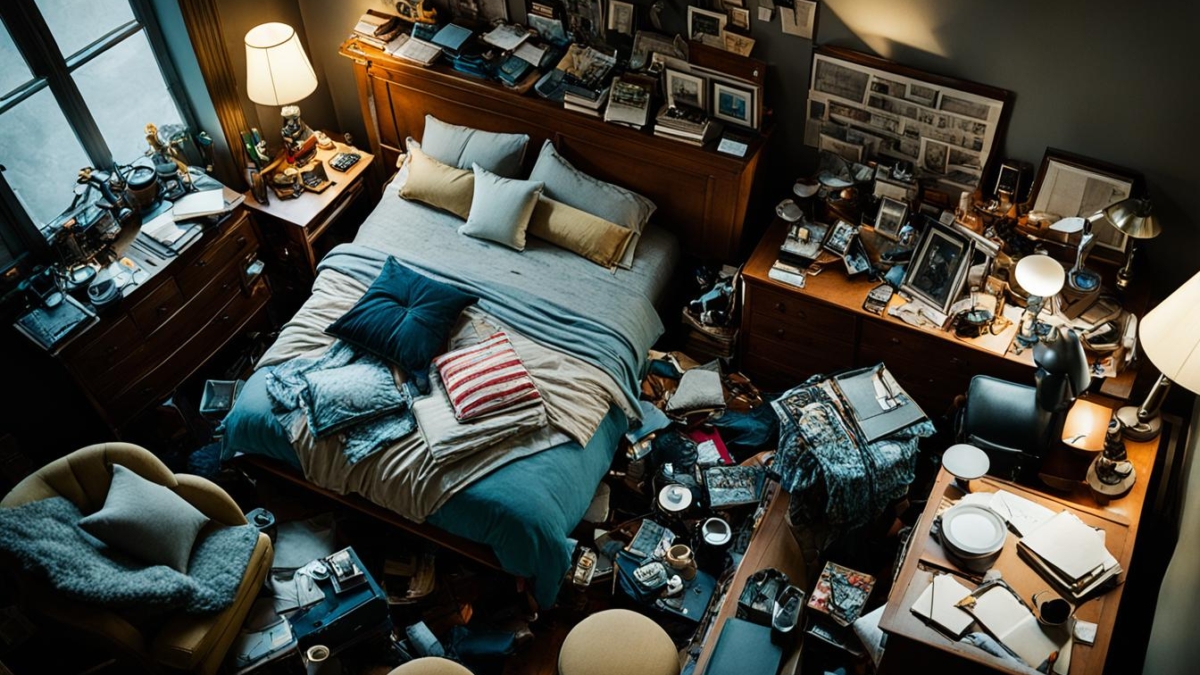Welcome to our guide on transformative ways to revitalize your living space. In this article, we’ll explore ten creative and simple strategies to rearrange your room for a fresh look. Whether you’re seeking a complete transformation or just a subtle change, these tips will help you breathe new life into your environment. Let’s dive in!
Evaluate Your Current Setup
Before embarking on a room rearrangement journey, it’s essential to evaluate your current room setup. This evaluation will help you identify the strengths and weaknesses of your existing layout, furniture placement, and overall functionality of the space. By thoroughly assessing your room, you’ll have a solid foundation from which to create an ideal layout that maximizes functionality and enhances the overall appeal of your living area.
Start by taking a step back and visually assessing the room as a whole. Does the current layout make the best use of the available space? Are there any areas that feel cluttered or underutilized? Pay attention to the traffic flow and consider whether it can be improved for better functionality.
Next, examine the placement of your furniture. Evaluate whether it serves its purpose effectively and if it contributes to an inviting and balanced atmosphere. Consider how each piece interacts with the others and whether their arrangement fosters a sense of harmony. Sometimes, a simple adjustment in furniture placement can completely transform the look and feel of a room.
Functionality is another critical aspect to assess. Determine if the current setup meets your practical needs and lifestyle requirements. Are there any specific activities or functions that your room should accommodate? Whether it’s a dedicated workspace, an entertainment area, or a cozy reading corner, incorporating functional zones can greatly enhance the usability and enjoyment of your space.
Remember, the evaluation stage is about identifying areas for improvement and envisioning an ideal layout that not only looks visually pleasing but also functions optimally for your lifestyle. By thoroughly assessing your current setup, you’ll lay the groundwork for a successful room rearrangement project that brings new life and functionality to your living space.
Play with Furniture Placement
In this section, we’ll explore different techniques for playing with furniture placement. The way you arrange your furniture can have a significant impact on the overall look and feel of your room. By strategically rearranging your furniture, you can improve room flow and achieve visual balance, creating a refreshing and harmonious atmosphere.
Experiment with Room Flow
One of the key aspects of furniture placement is considering the flow of your room. A well-planned room flow ensures easy movement and accessibility, making your space more functional and inviting. Start by removing any unnecessary obstacles and arranging furniture in a way that allows for natural traffic patterns.
Consider the placement of doors, windows, and focal points in your room. Arrange your furniture to create clear pathways that lead to these key elements. This will not only enhance the room’s functionality but also improve the overall aesthetic.
Achieve Visual Balance
Visual balance is another essential element to consider when arranging your furniture. It involves distributing visual weight evenly throughout the room, creating a sense of symmetry and harmony. Achieving visual balance can make a significant difference in the overall appeal of your space.
Start by selecting a focal point in your room, such as a fireplace, a window with a beautiful view, or a statement piece of furniture. Arrange your furniture around this focal point, ensuring that each side of the room feels balanced and visually pleasing.
Consider the size and scale of your furniture pieces when arranging them. Mix larger and smaller pieces to create visual interest and prevent your room from feeling monotonous. Additionally, use accessories and decor items to add visual weight where needed.
Furniture Placement Tips
| Tips | Description |
|---|---|
| Create conversation areas | Arrange furniture in a way that encourages conversation and interaction among guests. |
| Consider the room’s function | Adapt the furniture placement to suit the specific purpose of the room, such as a reading nook or a dining area. |
| Leave enough space for movement | Ensure that there is ample room for people to walk around and navigate comfortably within the space. |
| Experiment with different layouts | Don’t be afraid to try out multiple furniture arrangements until you find the one that works best for your room. |
By playing with furniture placement, you can transform the look and feel of your room. Experiment with room flow to optimize functionality, and strive for visual balance to create a pleasing and harmonious atmosphere. With these techniques, you’ll be able to curate a space that reflects your style and enhances your everyday living experience.
Introduce New Design Elements
Sometimes, rearranging furniture alone might not be enough to achieve the fresh look you desire for your room. To truly elevate the overall aesthetic and add pops of color, texture, and personality, it’s important to introduce new design elements such as accessories and decorative pieces.
By carefully selecting and incorporating these elements, you can create a visually appealing space that reflects your unique style and taste. Whether it’s a vibrant accent pillow, a statement piece of artwork, or a collection of decorative vases, the right accessories can make a significant impact on the overall ambiance of your room.
Additionally, incorporating decorative pieces allows you to showcase your personal interests and create a sense of warmth and coziness. It’s the small details that often make the biggest difference in making a house truly feel like a home.
Here are some ideas to inspire you:
- Experiment with different types of throw pillows to add pops of color and pattern to your couch or bed.
- Showcase your favorite artwork or photographs on a gallery wall as a focal point in the room.
- Add a stylish rug to anchor the space and create a cozy atmosphere.
- Incorporate plants and greenery to bring life and freshness into your room. Remember to choose plants that thrive in your specific lighting and care conditions.
- Set up a decorative tray or a collection of vintage books on your coffee table for added visual interest.
Remember, the key is to carefully curate your accessories and decorative pieces, ensuring they complement the overall theme and style of your room. Too many elements can create visual clutter, so choose wisely and let each piece shine in its own right.
Now, let’s take a look at an example of how new design elements can transform a room:

| Design Elements | Description |
|---|---|
| Accent Pillows | Add pops of color and texture to your couch or bed with carefully curated accent pillows. Mix and match different patterns and textures for visual interest. |
| Wall Art | Transform your walls with statement artwork or a gallery wall. Choose pieces that resonate with your personality and complement your room’s color scheme. |
| Rugs | Anchoring the space with a stylish rug not only adds visual appeal but also creates a cozy and comfortable atmosphere. Consider the size and color of the rug to ensure it harmonizes with your room. |
| Plants and Greenery | Bring life into your room with the addition of plants and greenery. They not only add freshness but also improve air quality and create a calming effect. |
| Decorative Trays | Organize and display small decorative items on a stylish tray placed on your coffee table or ottoman. This adds a touch of sophistication and keeps your surfaces clutter-free. |
Experiment with Lighting
Lighting plays a crucial role in setting the mood and ambiance of a room. It has the power to transform a space from dull and uninspiring to warm and inviting. In this section, we will explore how you can experiment with different lighting setups to achieve the desired atmosphere in your room.
Maximizing natural light is a great starting point. Not only does it provide a bright and open feel to the room, but it also has numerous health benefits. Position your furniture to make the most of natural light, allowing it to flood the space and create a vibrant ambiance.
But natural light is not always available or sufficient. That’s when incorporating various light sources comes into play. By strategically placing lamps, sconces, or pendant lights, you can create layers of light to add depth and dimension to your room. Consider using floor lamps to illuminate dark corners and table lamps for task lighting.
Installing dimmer switches is another fantastic way to experiment with lighting. It allows you to adjust the intensity of light to match the desired ambiance. Dimming the lights can instantly create a cozy and intimate atmosphere, perfect for relaxing evenings or romantic dinners.
Enhance the ambiance with different light temperatures
Lighting temperature has a significant impact on the ambiance of a room. Bright white light, similar to daylight, is often used in functional spaces like kitchens and bathrooms. Cool white light creates a refreshing and energizing atmosphere, making it ideal for work or study areas. On the other hand, warm white light is perfect for creating a cozy and inviting ambiance in living rooms, bedrooms, or dining areas.
Experiment with different light bulbs or LED strips to find the perfect temperature for each area of your room. You can even install smart lighting systems that allow you to change the color temperature according to your preferences.
Here’s an example of how you can revamp your lighting setup:
| Lighting Setup | Ambiance |
|---|---|
| Strategically place floor lamps with warm white bulbs in the corners of the room | Create a cozy and inviting atmosphere for relaxation |
| Install pendant lights with dimmer switches above the dining area | Set the mood for intimate dinners or lively gatherings |
| Add LED strips under shelves or behind furniture to create accent lighting | Highlight architectural features or decorative elements |
Remember that lighting is not just a practical necessity, but a powerful tool for enhancing the overall aesthetics of your room. So, don’t be afraid to get creative and experiment with different lighting setups to create a truly remarkable ambiance.
Create Functional Zones
When it comes to optimizing your room’s functionality, creating distinct functional zones is key. By organizing your space into multi-purpose areas, you can efficiently utilize every corner of the room to cater to your specific needs. Whether you’re looking to create a cozy reading nook, a productive work area, or an entertaining space, we’ve got you covered with tips and ideas for effective room organization.
1. Define the Purpose
Start by identifying the different functions you want your room to serve. Do you need a quiet area for relaxation? Or perhaps a dedicated space for work or hobbies? Understanding the purpose of each zone will help you determine the layout and furniture requirements.
2. Consider the Room Layout
Take a closer look at your room’s layout and size. Think about how different furniture pieces can be arranged to create functional zones without compromising the overall flow and visual appeal of the space. Experiment with different configurations until you find the most practical arrangement.
3. Use Room Dividers
Room dividers are a fantastic way to visually separate functional zones within a single room. Utilize bookshelves, sliding doors, curtains, or even strategically placed furniture to create distinct areas. These dividers not only provide privacy but also add an aesthetic element to your room.
4. Explore Storage Solutions
Effective room organization goes hand in hand with smart storage solutions. Incorporate furniture pieces that offer both functionality and storage, such as ottomans with hidden compartments or wall-mounted shelves. By keeping your belongings organized and easily accessible, you can maximize the functionality of each zone.
5. Pay Attention to Lighting
Lighting plays a crucial role in defining functional zones and creating the right ambiance. Ensure each zone has appropriate lighting that suits its purpose. Use task lighting for work areas, soft ambient lighting for relaxation zones, and adjustable lighting options for entertainment spaces.
6. Add Personal Touches
Don’t forget to infuse your personal style and preferences into each functional zone. Decorate with items that inspire you, reflect your interests, or bring a touch of joy to the space. Incorporate artwork, photographs, or plants to create a welcoming environment that feels truly yours.

| Functional Zone | Description |
|---|---|
| Reading Nook | Create a cozy corner with a comfortable chair, good lighting, and a bookshelf full of your favorite reads. |
| Work Area | Set up a dedicated space with a desk, ergonomic chair, and organizers to keep your work essentials in order. |
| Entertainment Space | Transform a corner into an entertainment hub with a TV, speakers, and a comfortable seating arrangement. |
| Exercise Corner | Dedicate a small area for exercise by placing a yoga mat, fitness equipment, and motivational posters. |
| Hobby Station | Create a designated spot to pursue your hobbies, such as painting, crafting, or playing a musical instrument. |
Embrace Minimalism
If you’re looking for a fresh and modern look, embracing minimalism can be the perfect solution. Decluttering and simplifying your room’s design not only enhances aesthetics but also offers numerous benefits. By letting go of unnecessary items and embracing the beauty of simplicity, you can create a serene and visually appealing environment.
Benefits of Embracing Minimalism
- Enhances overall visual appeal
- Reduces stress and promotes a sense of calm
- Makes cleaning and maintenance easier
- Improves focus and productivity
- Creates a more spacious and open atmosphere
When embracing minimalism, the key is to declutter and simplify. Start by assessing each item in your room and ask yourself if it serves a purpose or brings joy. If not, it’s time to let go. Donate or sell items that no longer serve you, freeing up space and creating a more harmonious environment.
Decluttering is not just about removing physical clutter; it’s a mindset shift towards simplicity and intentional living. – Marie Kondo
Consider adopting minimalist design principles such as clean lines, neutral colors, and functional furniture. Opt for furniture with hidden storage to keep belongings out of sight and maintain a clutter-free space. Remember, minimalism is about quality over quantity, focusing on the essentials that enhance both functionality and aesthetics.
As you embrace minimalism, don’t be afraid to experiment with different textures and materials to add depth and visual interest to your room. Incorporate natural elements, such as plants, to bring life and freshness to the space. By carefully curating each element, you can achieve a minimalist aesthetic that reflects your personal style and values.
| Minimalist Design Principles | Examples |
|---|---|
| Neutral Color Palette | Shades of white, beige, and gray |
| Clean Lines | Sleek, streamlined furniture |
| Functional Furniture | Multi-purpose pieces with hidden storage |
| Intentional Use of Space | Uncluttered surfaces and open areas |
| Quality over Quantity | Selecting a few statement pieces |
By embracing minimalism, you can transform your room into a haven of simplicity, allowing you to focus on what truly matters. Declutter, simplify, and create a space that embraces tranquility and aesthetic harmony.
Infuse Personal Touches
As you rearrange your room to create a fresh look, don’t forget to infuse it with personal touches that reflect who you are. The beauty of a space lies not only in its design but also in the meaningful items that make it uniquely yours.
One way to incorporate personal touches is by showcasing meaningful items that hold sentimental value. Display family heirlooms, cherished photographs, or souvenirs from memorable trips. These items not only add visual interest to your room but also evoke fond memories and create a sense of warmth.
Another way to infuse personal touches is through carefully selected decor. Choose pieces that resonate with your interests, hobbies, or favorite colors. Consider incorporating artwork, decorative objects, or textiles that speak to your personality. These small details can make a big impact and turn your room into a reflection of your true self.
Finally, don’t forget about the memories. Use your rearranged room as a space to create new memories with friends and loved ones. Whether it’s a cozy corner for game nights, a reading nook for quiet moments, or an inviting seating area for conversations, let your room be a place where meaningful connections are forged and treasured.


Add a Comment